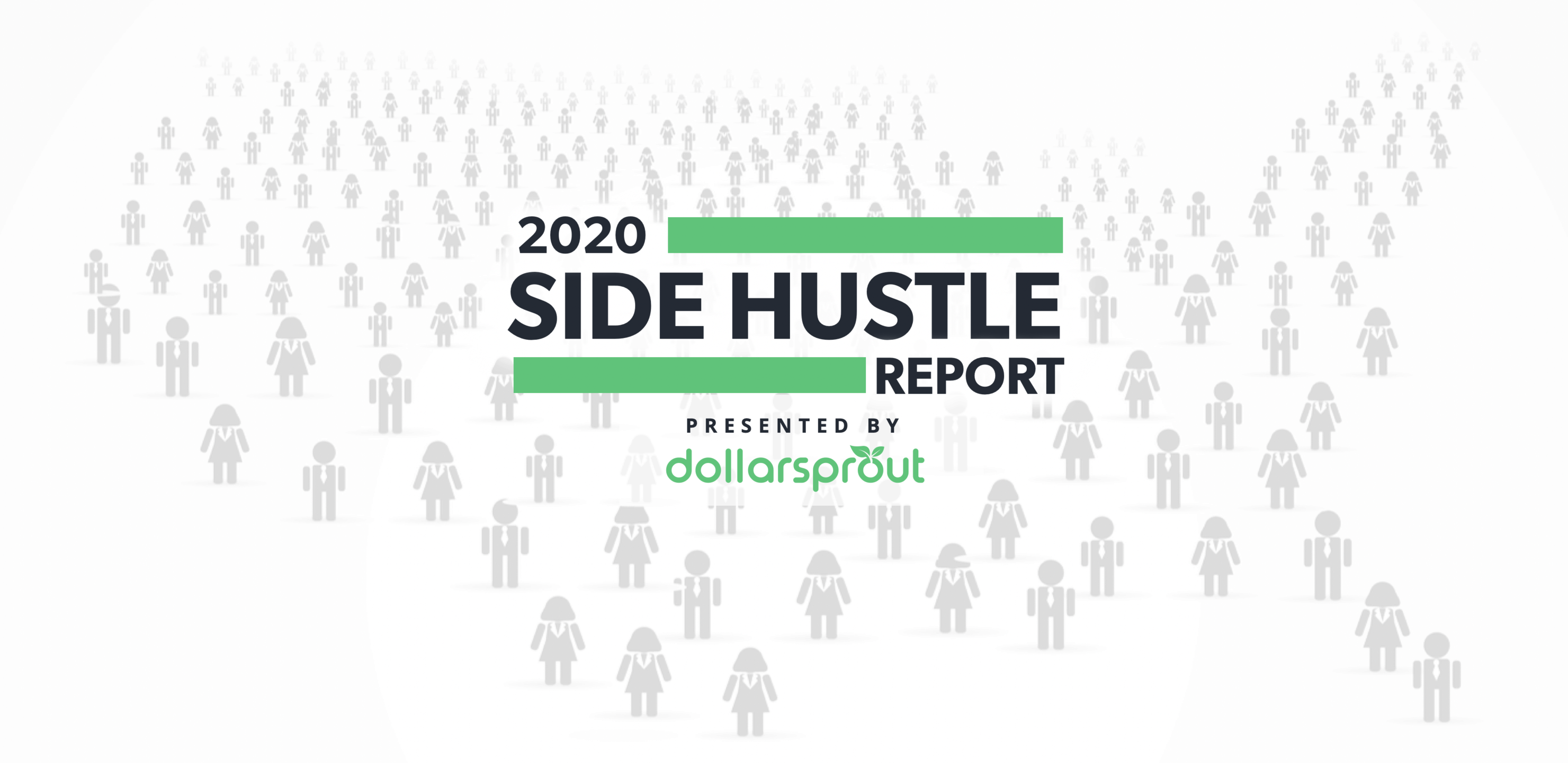9 Things Every Side Hustler Should Do Before Tax Season
Most side hustlers don’t realize how much tax prep they can control until it’s too late. Here’s how to stay organized, avoid penalties, and make next tax season a breeze.

Side hustles can open doors — extra income, new skills, a more control over your time. But when tax season rolls around, that freedom can suddenly feel complicated.
Unlike a W-2 job, no one’s setting money aside for you. So when April hits, a lot of side hustlers get blindsided by a tax bill they didn’t see coming. That’s especially painful when most earn less than $500 a month and rely on it to make ends meet, according to the 2024 DollarSprout Side Hustle Report.
And 2025 isn’t making things simpler. There are new reporting thresholds, delayed 1099-K rules, and more talk around deductions — all easy to miss if you’re not looking for them.
The good news? You don’t need to become a tax expert. With a few small systems in place, you can keep your side hustle organized and avoid the April panic entirely. Here are nine things to do before tax season that will make the next one a lot less stressful.
1. Separate and Track Your Side Hustle Finances
The easiest way to make tax season miserable is to mix your side hustle money with your personal spending. Once that line blurs, it’s almost impossible to untangle which gas receipt or Amazon order counts as a business expense.
Start by opening a separate checking account just for your hustle. It doesn’t need to be fancy — a free online business account or even a second personal account will do. The goal is clarity: income in, expenses out, clean paper trail.
Next, find a system you’ll actually use. QuickBooks, FreshBooks, and Wave all work well for tracking expenses and income automatically, but a spreadsheet works too if you keep up with it. The trick is consistency — logging things weekly instead of dumping a year’s worth of receipts into a shoebox in March.
And yes, receipts still matter. The IRS doesn’t care if they’re paper or digital, only that you can show proof when claiming a deduction. Snap photos, upload PDFs, or store them in an app like Keeper. Future you will thank you when every write-off is right where it should be.
2. Know the $400 Rule for Self-Employment Tax
Some people believe that if you earn under $600 in a year, you don’t have to pay taxes. This myth stems from the 1099-NEC reporting threshold — if you earn less than that amount, your client is not required to send you a 1099-NEC. (That rule is expected to change again in 2026.)
The real threshold for self-employment tax is $400. If you make any amount over that, you must pay 15.3 percent of your net earnings in self-employment tax. That covers your contributions to Social Security and Medicare — the same taxes an employer would normally withhold from a paycheck.
So even if you make just over $400 selling crocheted dolls on Etsy, you’ll still owe a portion of it to the government. The $400 rule explains when that tax kicks in and how it affects quarterly payments.
3. Set Aside 25–30% of Your Earnings for Taxes
If you’re a hustler who spends everything you earn, tax time will be a nightmare.
Instead, make saving a habit. Start by opening a free online savings account and move 25–30% of your net earnings into it every time you get paid. Transfer more if you live in a state with income tax. This way, you’ll likely have enough money set aside for taxes, and you won’t panic every April.
Think of it as gifting yourself peace of mind — future-you will be grateful you treated taxes like a non-negotiable bill instead of a last-minute scramble.
Related: 6 Tips to Avoid an Unexpected Tax Bill from Your Side Hustle
4. Remember Quarterly Estimated Taxes
Self-employed workers don’t just pay taxes once a year — they pay them quarterly. The IRS expects these payments every few months and can penalize you if you underpay. If you expect to owe more than $1,000 when you file, you’ll likely need to make estimated payments. Each installment equals roughly 25% of what you expect to owe for the year, due in April, June, September, and January.
Side hustle income isn’t always predictable, so if you’re unsure how much to send, the IRS lets you base payments on your previous year’s tax bill to avoid penalties. Keep in mind that higher earners — those who made more than $150,000 last year, or $75,000 if married filing separately — must pay 110% of that amount to qualify for safe harbor protection.
Think of quarterly payments as a way to spread the burden instead of facing one giant bill next spring. It’s not fun, but it’s a lot easier than playing catch-up after the deadline.
5. Stay Current on 1099-K Reporting Rules
Tax rules are always changing, including those that govern 1099-K reporting. Unfortunately, this means many gig workers are confused about how much they must make before receiving 1099-K forms.
The IRS states that as of 2025, third-party settlement organizations — like payment apps and online marketplaces — must file Form 1099-K payment reporting forms if you made $5,000 or more throughout the year. In 2026, that threshold is expected to be lowered to $600.
Even if your side-hustle app or website doesn’t issue a 1099-K, you’re still responsible for paying taxes on that income. Use your own records when you file to make sure everything you earned is reported correctly.
6. Take Advantage of the New “No Tax on Tips” Deduction (2025–2028)
Not all 2025 tax changes are bad news. Under the One Big Beautiful Bill Act — now law — service workers can deduct up to $25,000 in reported tips from their ordinary taxable income. It’s a rare and valuable break for people who rely on tips to make a living.
This deduction applies to employees and self-employed individuals in occupations the IRS identifies as “customarily and regularly receiving tips” as of December 31, 2024. That includes servers, bartenders, delivery drivers, and other workers in tip-heavy roles.
For example, someone earning $8,000 in tips and $41,000 in total income could see their taxable income drop to $33,000. The deduction begins to phase out for taxpayers with modified adjusted gross income over $150,000 ($300,000 for joint filers).
Keep in mind that the full amount is still taxable toward Self-Employment taxes if not working in a W2 position.
You can read the official IRS guidance on its summary of the No Tax on Tips deduction.
7. Check Whether the New Overtime Deduction Applies
If you work a W-2 job in addition to your side hustle, another new deduction under the One Big Beautiful Bill Act could benefit you. The “No Tax on Overtime” provision lets workers exclude the overtime premium — the “half” in time-and-a-half pay — from their taxable income.
The maximum annual deduction is $12,500 ($25,000 for joint filers) and begins to phase out at a modified adjusted gross income of $150,000 ($300,000 for joint filers). This deduction applies through 2028 and is available whether or not you itemize.
For example, if you pick up extra shifts or holiday hours at your full-time job before heading out to drive for Lyft, the overtime portion of your pay can now be excluded from your taxable income.
You can find full details in the IRS’s overview of the No Tax on Overtime deduction.
Remember, this deduction only applies to W-2 wages — not income from 1099 side hustles.
8. Understand How Deduction Thresholds May Affect You
Before filing your taxes, take time to familiarize yourself with any deduction changes. The 2025 regulations have given us a higher standard deduction — $15,000 for single filers and $30,000 for married couples.
If you’re itemizing, they have also raised the state and local tax (SALT) cap to $40,000. So, if you pay $40,000 or less to your state and local governments, you can deduct the entire amount from your federal taxes, which can make a significant difference for hustlers in high-tax states.
Most filers will still take the standard deduction, but it’s good to know these deduction shifts exist. You can also review the full list of 2025 side hustle tax deductions to see which ones you may qualify for.
9. Reconcile Your Payment Platforms
Ultimately, you are responsible for reporting your entire income and paying the appropriate taxes. That’s why you need access to accurate payment records.
Apps like PayPal, Venmo, Cash App, and Stripe don’t always issue complete 1099s, so you should download CSVs or payment summaries each December that detail what you’ve made throughout the year.
These records are usually easy to obtain. For example, you can download a payment summary from the Venmo app in four easy steps:
- Go to Settings
- Click Statements
- Tap the dropdown menu and select the time period you want to see.
- Choose whether you want to download the file to your device or send it to your email address.
And voila! You’ve got a record of income you’ve received through Venmo and can file accurately, whether or not you receive a 1099-K. Every app will provide similar reporting, so you can access any processing and transaction fees records and deduct them against your gross self-employment income.
Protect Your Side Hustle Income
The thought of filing taxes makes many people — especially self-employed side hustlers — feel like breathing into a paper bag. But April doesn’t have to feel like one big panic attack.
Simply set aside 25–30% of your earnings, keep accurate records, and file your quarterly and annual taxes on time. By keeping up to date on new tax regulations, you can take full advantage of applicable deductions and protect your side hustle income with smart tax prep.
If these steps start to feel too complicated, you can always invest in financial software or CPA services. The last thing you want is to run afoul of the IRS — getting your taxes in order now lets you keep sailing forward with your side hustle instead of sinking at tax time.








